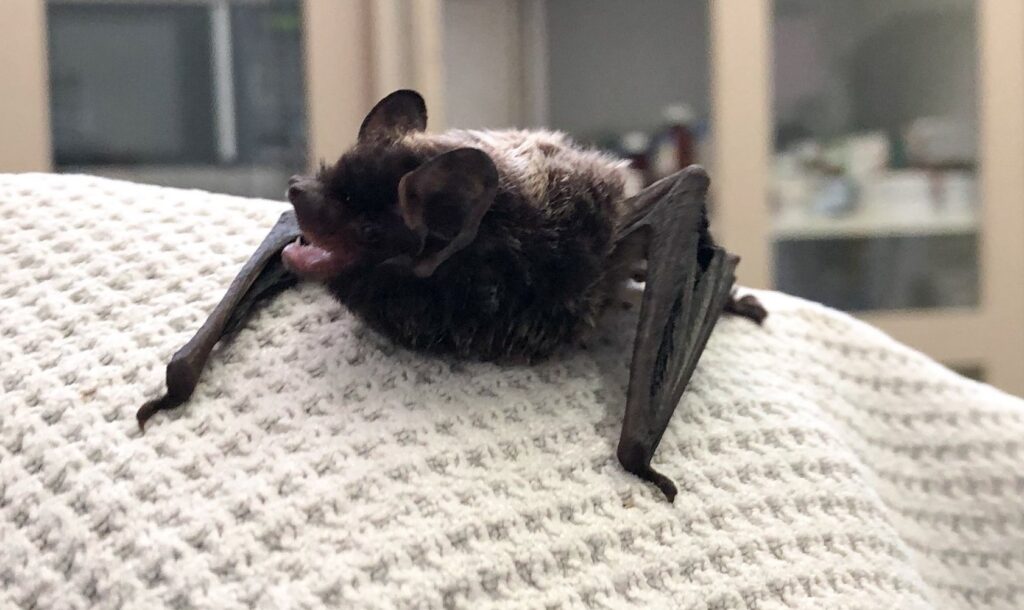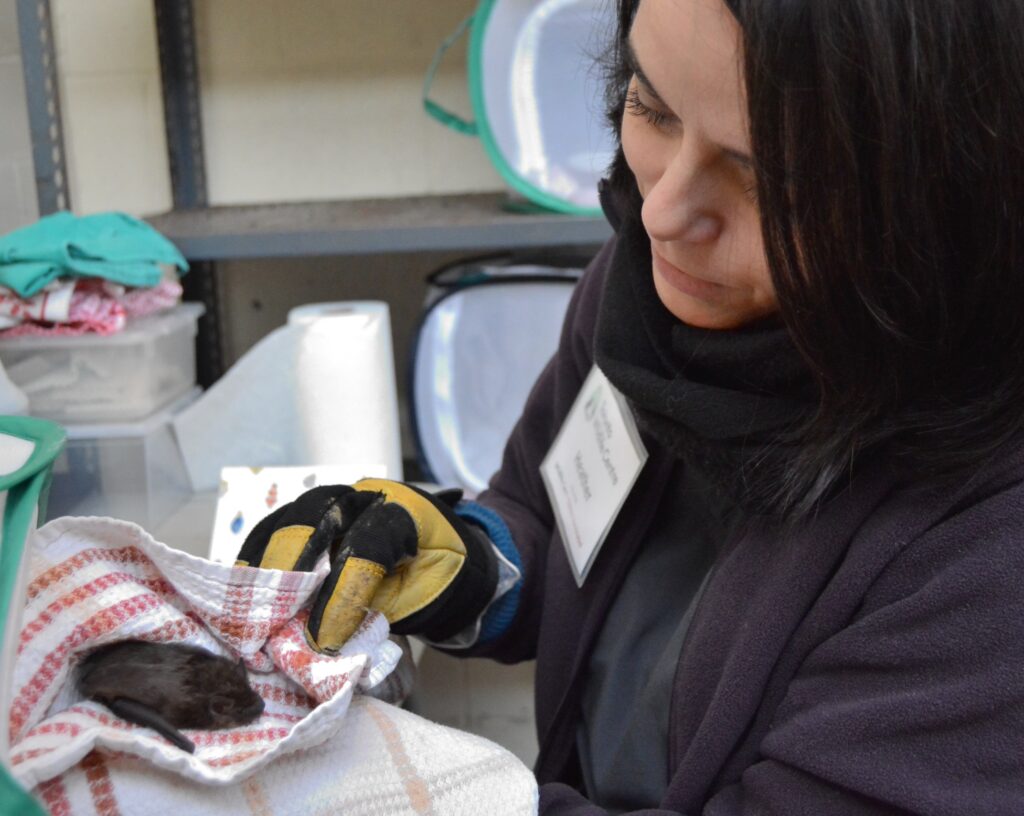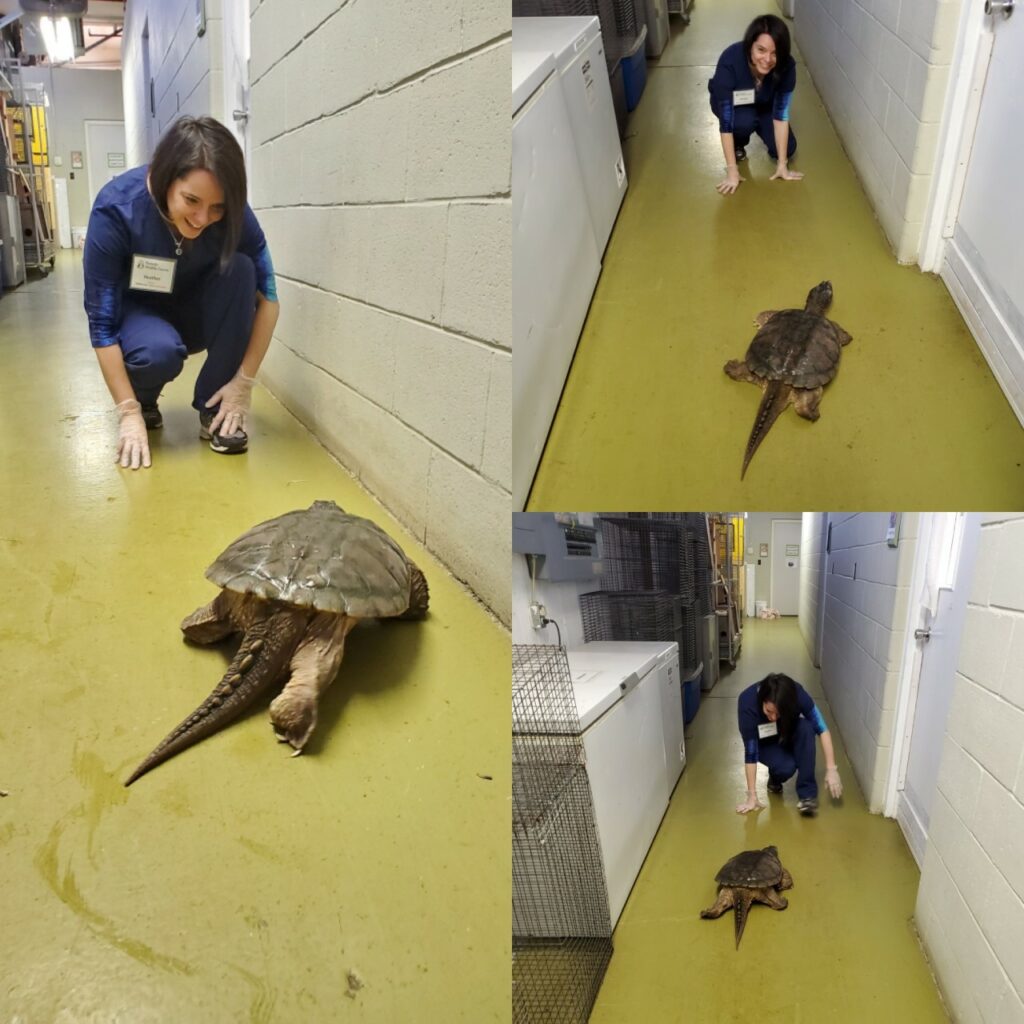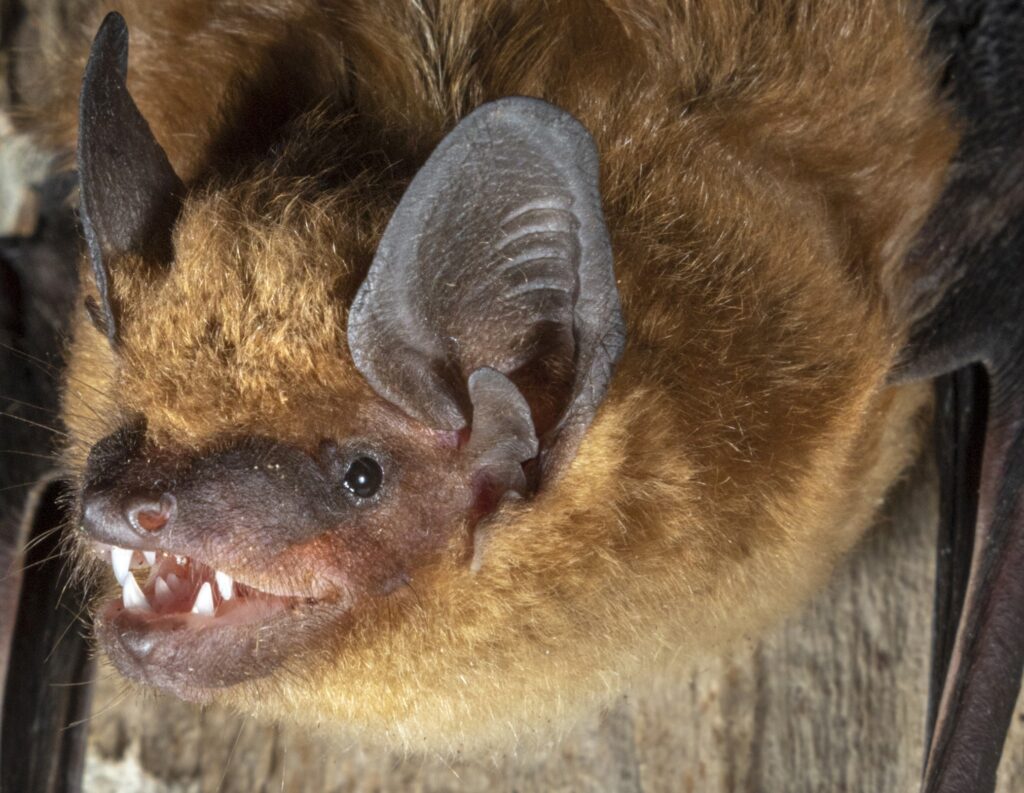
I almost cried! At the wildlife centre, as usual the last thing I did in the day was feed, weigh and clean the bats. I love caring for the little cuties and have come to know each one and their own personality and sweet quirks.
I look forward to seeing them each week. I pick up each enclosure from its place on the shelf in the humidity tent (big brown bats, who are very little – their name is misleading – are housed in the humidity tent) or from the table top (silver haired bats), and move it to my workspace on a counter top in the Songbird Room.
I have a variety of worms, large tweezers, my protective gloves, calcium water, bat vitamins, and clean fresh tea towels, a sensitive weigh scale set up there, and a garbage can nearby.
Once I’ve moved the enclosure to my workspace, I check the chart to see who it is, and what they need today in terms of food, cleaning, weighing, and any special care. Like, for a while, we were putting emu oil on Ursula’s swollen and sore wrists, which helped a lot.
So, starting logically, from left to right, I did the first silver haired bat on the table. It was Ursula, who didn’t need much more than a spot cleaning and replenishing her food and water.
The next bat enclosure I moved to my workspace. Looked at the chart to see who it is and what they need today. And what a surprise!
IT WAS LEONTES!!! Little love! I was just about in tears. I am just about in tears again now, while typing this. It was such a surprise and so wonderful to see him again!
He looks good – his tiny body is about the length of my thumb, and his silvery coat is beautiful. He learned to eat on his own while he was in foster care (I mentioned this in a previous post), so I only needed to do a spot cleaning and replenish his food, but oh my goodness I was so happy to see him and do that!
Leontes came into care at the wildlife centre on November 4, 2019. I have been taking care of him every week since November 17, which was a month or so after I was properly and thoroughly rabies vaccinated and had provided the staff with my titer (proof for the files).
I was very worried about him in January when he started to not eat or groom well. Around that time, I learned a special way of feeding him that worked well – Leontes laying on his piece of bark, and a tea towel over him like a little mini cave. I could then give him water from a tiny syringe and then he would eat.
I also learned to feed him a special bat food from a syringe. It is a mixture of mealworms, oils, and vitamins blended into a smoothie or baby food consistency. He ate that really well. Seemed to like it. Not like Phoenix worms! He is very clear that he does NOT like phoenix worms! Mealworms he loves. Waxworms he will tolerate, especially with some help to hold it up for him. But not Phoenix worms – you can almost her him say “yuck!” He also needed patience, as he often would eat then need a bit of a rest before being ready to be fed the rest of his food.
We were all cheering him on in February when he was recovering and was back to having a huge appetite. He had lost some of the fur from his chest and was showing a little pinkish skin. I looked forward to seeing him, and helping with his recovery, every week.
Then in March when Covid 19 changed everything, he and many of the other bats went in to foster care. I was hoping to be able to foster him, other bats, and other animals at my home, but I hear that he was being fostered by one of the staff people. I missed him but was happy to know he would be getting great care.
That said, I was afraid I’d never see him again. Knowing that bats should be released in summertime, I thought that if he stays in foster care, and Covid 19 forces isolation, distancing, and reduced staffing at the Wildlife Centre for long, there’s a chance he would be released before I ever saw him again.
But he’s back! And he’s doing well! He is eating on his own and being exercised regularly to get his flying muscles back into shape for him to be released.
I will start helping to fly the bats for exercise in the next week or two. In the meantime, I am happy to be able to feed and clean Leontes and see him hanging on his tea towel or hiding and resting in his fave spot underneath a piece of bark, each week.
Until he is in shape and ready to go back into the wild world.



